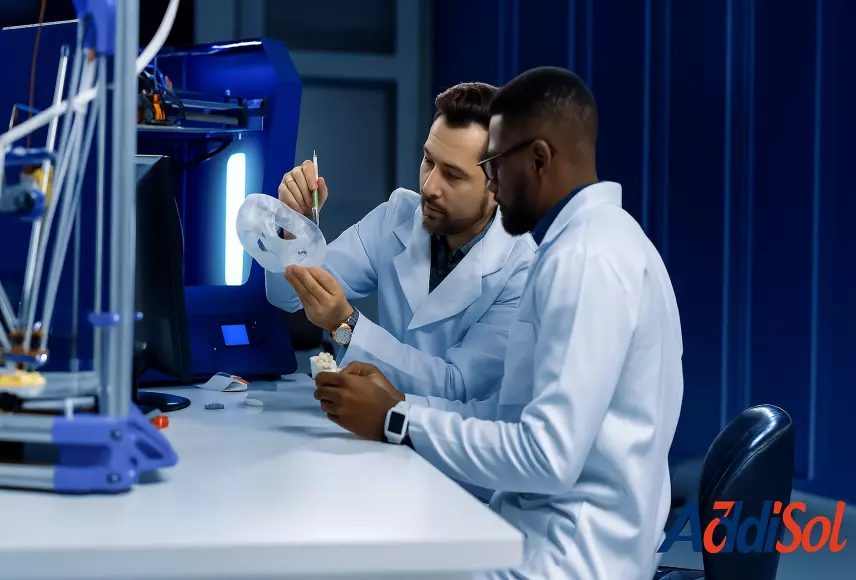- [email protected]
- 00974-50540047

In many industries, the availability of replacement parts can make or break operations. Oil & gas facilities, aviation maintenance, and industrial machinery often depend on components that may no longer be in production. Traditionally, sourcing such parts involves costly custom machining or waiting months for OEM supply.
Today, reverse engineering (RE) combined with 3D printing is changing the game, offering faster, cost-effective, and even improved replacement solutions.
What is Reverse Engineering in Manufacturing?
Reverse engineering starts by capturing the geometry and design intent of an existing component using 3D scanning. The scanned data is converted into a CAD model, which can then be reproduced, modified, or optimized.
This process:
Why 3D Printing is Revolutionizing Reverse Engineering
Traditionally, reverse-engineered parts were remanufactured using CNC machining which is slow and expensive for low-volume needs. Additive manufacturing (AM) accelerates this process by:
Enabling on-demand production without tooling Reproducing complex geometries easily Reducing lead times dramatically Offering flexibility in materials, from polymers to metals to composites
Fiber-Reinforced 3D Printing: Polymers with a Performance Boost
Standard polymer 3D printing is often limited by mechanical strength. To overcome this, engineers have turned to fiber-reinforced 3D printing, where chopped or continuous fibers are embedded in a plastic matrix to enhance strength and stiffness.
Benefits include:
Improved load-bearing capacity compared to pure polymers Lower weight than traditional metals Greater durability for functional end-use parts
This opens up new possibilities for producing strong, lightweight replacements without the need for expensive metal fabrication.
From Fiber Reinforcement to CFC: The Next Level
Among reinforcement techniques, Composite Fiber Co-Extrusion (CFC) stands out. Unlike typical fiber-filled filaments, CFC uses continuous carbon or basalt fibers co-extruded with thermoplastics during printing. This approach allows fibers to be strategically placed along stress paths, resulting in parts with mechanical properties rivaling metals.
Why CFC is a game-changer:
Metal-like strength with 5 to 10 times the stiffness of standard plastics Weight reduction compared to metallic counterparts Optimized performance through fiber orientation and lattice structures Lower costs than metal 3D printing with easier processing
Real-World Use Cases of 3D-Printed Replacement Parts
Industries worldwide are already seeing the benefits:
Oil & Gas: 3D-printed pump impellers and pipe connectors have cut lead times from months to days. Aerospace: Airlines like Lufthansa Technik use 3D printing to reproduce non-critical aircraft interior parts, avoiding costly downtime. Automotive Aftermarket: Classic car restorers scan and print discontinued brackets and housings, with reinforced composites serving as durable replacements. Industrial Maintenance: Manufacturers use CFC-printed jigs, fixtures, and machine components to keep production running efficiently.
These cases prove that 3D printing isn’t just for prototypes, rather it’s now a trusted method for end-use parts.
How Addisol Delivers Reverse Engineering Solutions
At AddiSol, we integrate:
3D Scanning to capture accurate geometry of worn or obsolete parts CAD Redesign & Optimization to improve performance or reduce weight Advanced Additive Manufacturing, including CFC technology for strong composite replacements and SLM for metal reproduction
Our approach ensures that replacement parts not only meet the original specifications but often surpass them.
Conclusion: The Future of Replacement Parts
Reverse engineering combined with advanced 3D printing technologies like CFC enables industries to extend the life of assets, reduce downtime, and cut costs - all while opening doors to design improvements.
Looking to Replace Legacy Parts Quickly?
Contact AddiSol to learn how we can help with reverse engineering and high-performance 3D printing solutions tailored to your needs.